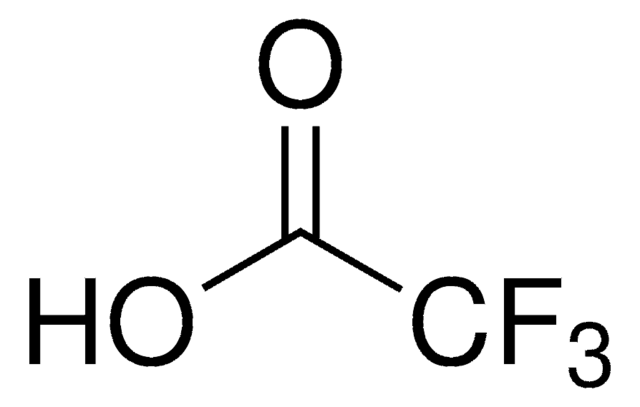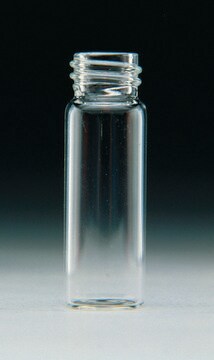299537
Ácido trifluoroacético
≥99%, for protein sequencing
Sinónimos:
TFA
About This Item
Productos recomendados
vapor density
3.9 (vs air)
Quality Level
vapor pressure
97.5 mmHg ( 20 °C)
type
for protein sequencing
assay
≥99%
form
liquid
impurities
<0.05% water
evapn. residue
<0.005%
refractive index
n20/D 1.3 (lit.)
pH
1 (20 °C, 10 g/L)
bp
72.4 °C (lit.)
mp
−15.4 °C (lit.)
density
1.489 g/mL at 20 °C (lit.)
SMILES string
OC(C(F)(F)F)=O
InChI
1S/C2HF3O2/c3-2(4,5)1(6)7/h(H,6,7)
InChI key
DTQVDTLACAAQTR-UHFFFAOYSA-N
¿Está buscando productos similares? Visita Guía de comparación de productos
Categorías relacionadas
General description
Application
- Mass spectrometry for protein identification.
- Microwave-irradiated bromination of isoxazoles and pyrazoles with N-bromosuccinimide to synthesize mono-brominated isoxazoles and pyrazoles.
- Lewis acid-catalyzed 6-endo-digcyclization of 2-(2-arylethynyl)heteroaryl esters to heterocyclic lactones.
- Electrospinning of cellulose acetate to prepare the corresponding nanofibrous membranes.
signalword
Danger
hcodes
Hazard Classifications
Acute Tox. 4 Inhalation - Aquatic Chronic 3 - Eye Dam. 1 - Skin Corr. 1A
Storage Class
8A - Combustible corrosive hazardous materials
wgk_germany
WGK 2
flash_point_f
No data available
flash_point_c
No data available
Elija entre una de las versiones más recientes:
¿Ya tiene este producto?
Encuentre la documentación para los productos que ha comprado recientemente en la Biblioteca de documentos.
Los clientes también vieron
Nuestro equipo de científicos tiene experiencia en todas las áreas de investigación: Ciencias de la vida, Ciencia de los materiales, Síntesis química, Cromatografía, Analítica y muchas otras.
Póngase en contacto con el Servicio técnico


